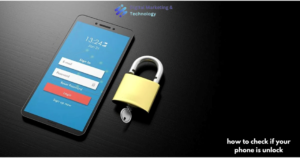Solid state battery technology is changing how we think about energy storage. This next generation battery technology uses solid electrolyte materials instead of the liquid electrolytes found in traditional lithium-ion batteries, creating safer and more powerful energy storage solutions.
This guide is for engineers, product developers, electric vehicle enthusiasts, and anyone curious about the future of battery technology who wants to understand what makes solid state batteries different and why they matter.
We’ll explore how solid state batteries vs lithium ion batteries compare in terms of performance and safety. You’ll learn about the revolutionary battery architecture that enables higher battery energy density and improved solid state battery safety. Finally, we’ll cover the current state of solid state battery manufacturing and the real-world solid state battery applications already in development.
Table of Contents
Superior Energy Storage Performance Over Traditional Batteries
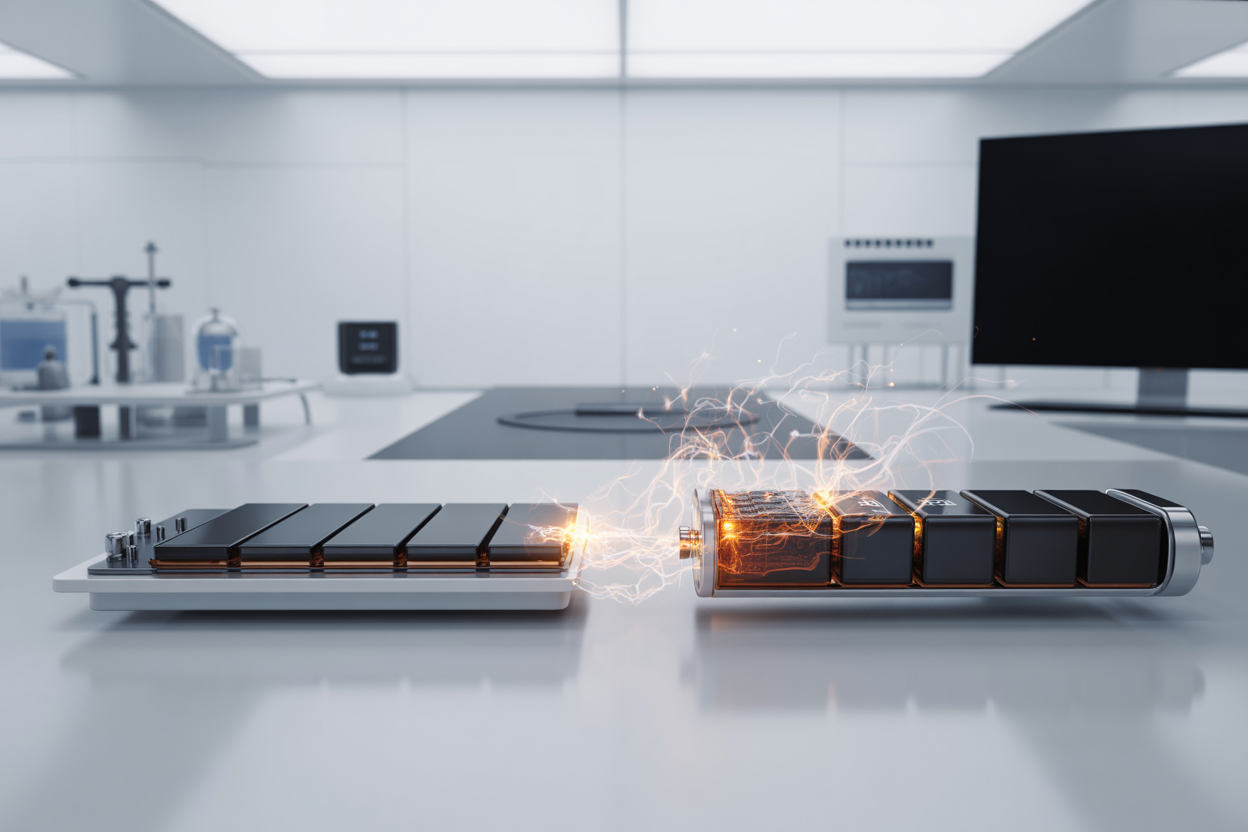
Higher Energy Density Capabilities Exceeding 350 Wh/kg
Solid state battery technology demonstrates remarkable energy density performance that significantly surpasses traditional lithium-ion batteries. While conventional lithium-ion batteries typically achieve energy densities ranging from 160-250 Wh/kg, solid state batteries can reach 250-800 Wh/kg depending on their configuration. Thin-film solid state batteries showcase the most impressive capabilities, delivering 300-900 Wh/kg, while bulk-type variants achieve 250-500 Wh/kg.
Recent breakthroughs by Mercedes and Factorial have achieved 450 Wh/kg in new solid state battery designs, resulting in batteries that are 33% smaller and 40% lighter than comparable lithium-ion alternatives. This superior energy density directly translates to enhanced performance metrics across multiple applications.
Extended Driving Range Potential of 400-500 Miles Per Charge
The enhanced energy density of solid state batteries enables unprecedented driving ranges for electric vehicles. Toyota’s development roadmap indicates their solid state batteries will deliver ranges exceeding 620 miles per charge when mass production begins in 2027-2028. This represents a substantial improvement over current lithium-ion technology limitations.
Faster Charging Speeds Under 15 Minutes (10-80%)
Solid state batteries demonstrate exceptional fast-charging capabilities that outperform traditional battery technology. Toyota’s planned solid state batteries will achieve charging times of just 10 minutes for significant capacity restoration. Some prototype solid state batteries have already demonstrated the ability to reach 80% charge in under 15 minutes, showcasing their potential for ultra-fast charging applications.
Broader Operating Temperature Range from -50°C to 125°C
Unlike lithium-ion batteries that are sensitive to temperature fluctuations, solid state batteries maintain stable performance across extreme temperature conditions. The solid electrolyte architecture provides enhanced temperature control and stability, making these batteries less affected by environmental temperature variations compared to their liquid electrolyte counterparts.
Enhanced Safety Features and Risk Reduction
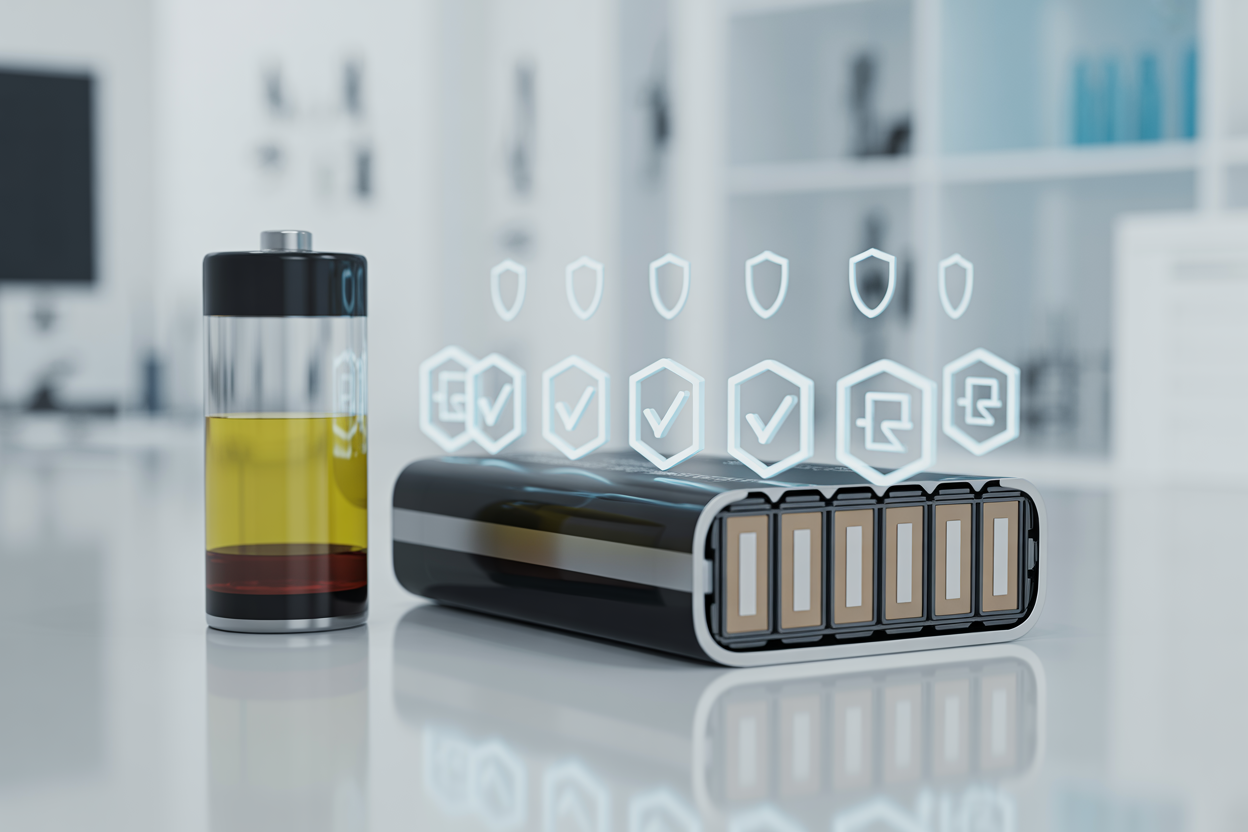
Non-Flammable Solid Electrolyte Eliminates Thermal Runaway Risk
Solid state battery safety represents a fundamental advancement over traditional lithium-ion technologies, particularly through the elimination of thermal runaway risks. While conventional batteries rely on flammable liquid electrolytes that can ignite during extreme conditions, solid electrolyte materials provide inherent fire resistance by removing combustible components entirely.
Elimination of Combustible Organic Separators and Materials
Now that we understand the basic safety advantages, it’s important to recognize that solid state battery technology eliminates organic separators and other combustible materials found in conventional batteries. Although research indicates that solid-state batteries at the cell level are not completely immune to thermal issues under extreme abuse conditions, the solid-state architecture significantly reduces fire hazards through its fundamentally different material composition and structural design approach.
Revolutionary Battery Architecture and Materials
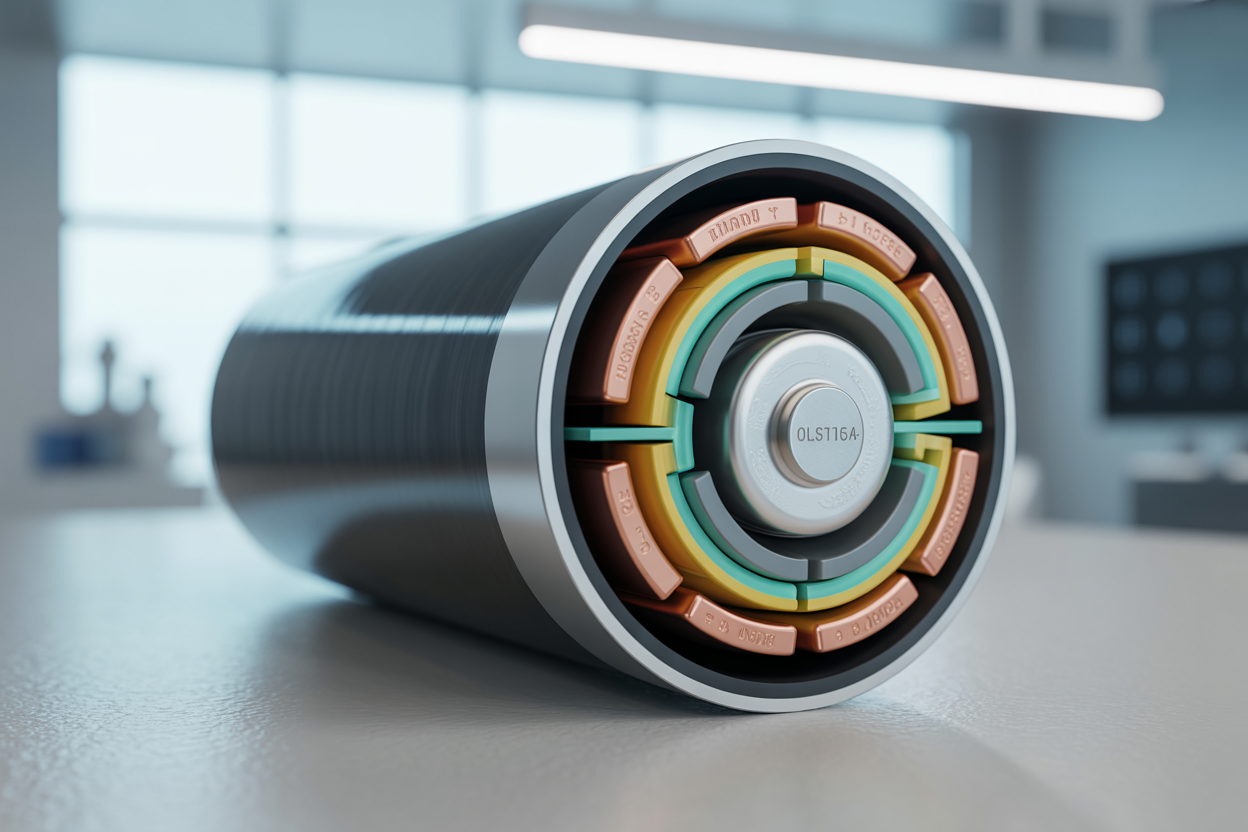
Anodeless Design Eliminating Graphite and Silicon Host Materials
Solid state battery technology revolutionizes traditional battery architecture by utilizing lithium metal anodes instead of conventional graphite and silicon host materials. This anodeless design approach enables significantly higher energy densities compared to traditional lithium-ion batteries, as lithium metal provides superior energy storage capacity without requiring host structures that add weight and volume.
Proprietary Solid Ceramic Separator Technology
The breakthrough in solid state batteries lies in replacing liquid electrolytes with solid electrolyte materials that serve as both separator and ion conductor. These solid electrolytes are non-flammable, eliminating the fire risks associated with traditional liquid electrolytes while ensuring more stable operation over time and minimizing battery degradation for extended system lifespan.
Diverse Solid Electrolyte Material Options
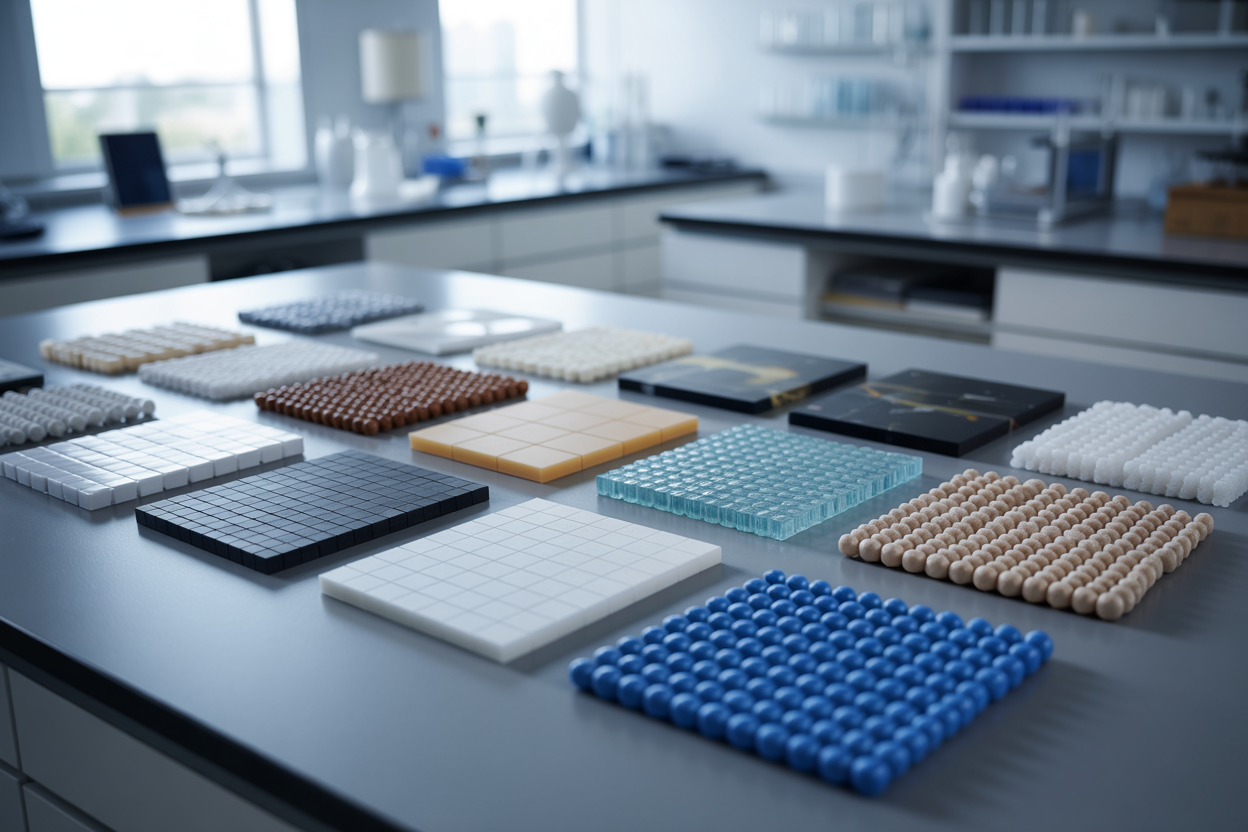
Ceramic-Based Electrolytes (Oxides, Sulfides, Phosphates)
Among solid electrolyte materials, sulfide-based conductors represent the most promising ceramic electrolyte option for next-generation solid state battery technology. Lithium argyrodites, specifically Li6PS5Cl and Li5.5PS4.5X1.5 (where X represents Cl or Br), have garnered extensive attention due to their impressive room-temperature ionic conductivity that rivals traditional liquid electrolytes while utilizing abundant raw materials for cost-effective production.
Chloride Superionic Conductors for Cost-Effective Solutions
Recent advancements in sulfide solid electrolytes have focused on optimizing synthesis techniques through both solid-phase and liquid-phase methods, coupled with strategic doping modifications that significantly enhance ionic conductivity and improve chemical stability. These chloride-containing superionic conductors, including Li5.5PS4.5Cl0.8Br0.723, demonstrate exceptional performance characteristics that position them as key components for advancing battery safety, efficiency, and energy density in solid state battery applications.
Extended Battery Life and Durability Benefits
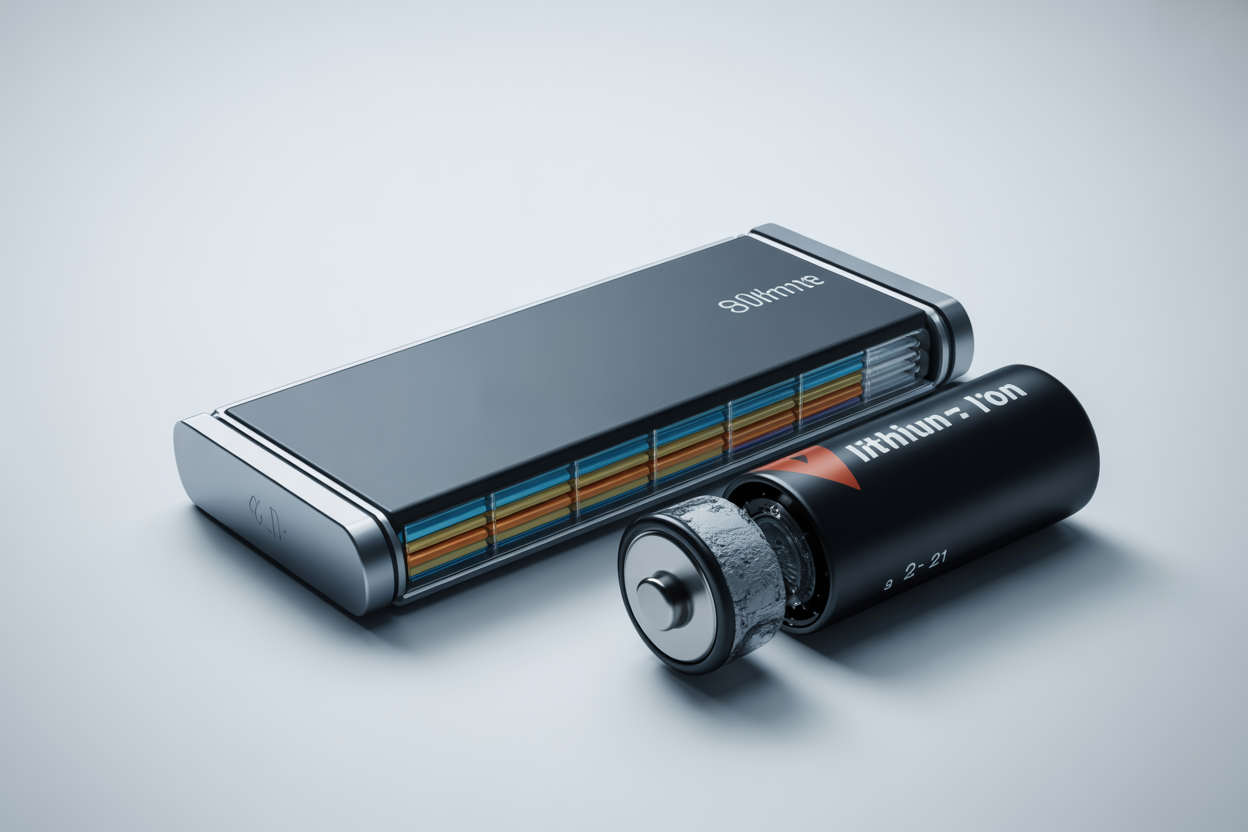
Elimination of Capacity Loss at Anode Interface
Solid state battery technology demonstrates remarkable durability improvements through advanced interfacial engineering approaches that effectively suppress dendrite formation at the anode interface. This breakthrough addresses one of the primary degradation mechanisms that plague traditional lithium-ion batteries, where capacity loss occurs due to chemical side reactions and structural deterioration.
Over 1,000 Charge Cycles with 95% Energy Retention
The enhanced cycle life performance of solid state batteries represents a significant advancement in energy storage technology. Through comprehensive analysis of battery degradation mechanisms and their impact on lifespan, these next generation battery systems achieve exceptional cycle durability ranging from 10,000 to 100,000 cycles, fundamentally transforming the sustainability and economic viability of advanced battery technology applications.
Cost-Effective Manufacturing and Production Advantages
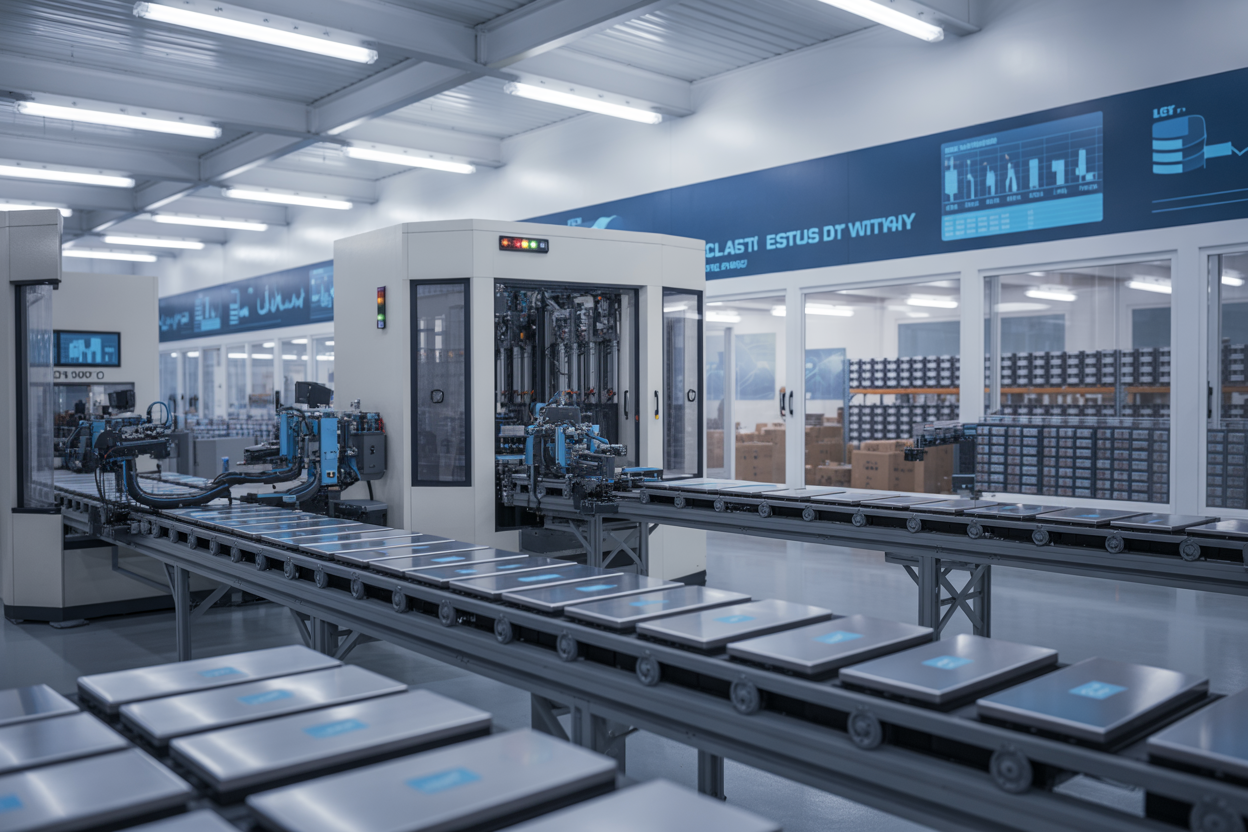
Elimination of Expensive Anode Host Materials
Solid state battery technology eliminates the need for costly anode host materials traditionally required in lithium-ion batteries. This fundamental design change directly impacts the cost structure, as raw materials currently account for 40% of the total per kWh cost. By utilizing lithium metal anodes directly with solid electrolytes, manufacturers can significantly reduce material expenses while maintaining superior performance characteristics.
Reduced Manufacturing Complexity and Costs
The manufacturing process for solid state batteries offers substantial cost advantages through simplified production techniques. With manufacturing processes representing 30% of current costs, the streamlined assembly eliminates complex liquid electrolyte handling systems and reduces the need for expensive safety measures. As production scales increase from pilot production ($400-$600 per kWh) to mass production (below $200 per kWh), these manufacturing efficiencies become increasingly significant in achieving cost-competitive solid state battery manufacturing.
Advanced Manufacturing Processes and Techniques
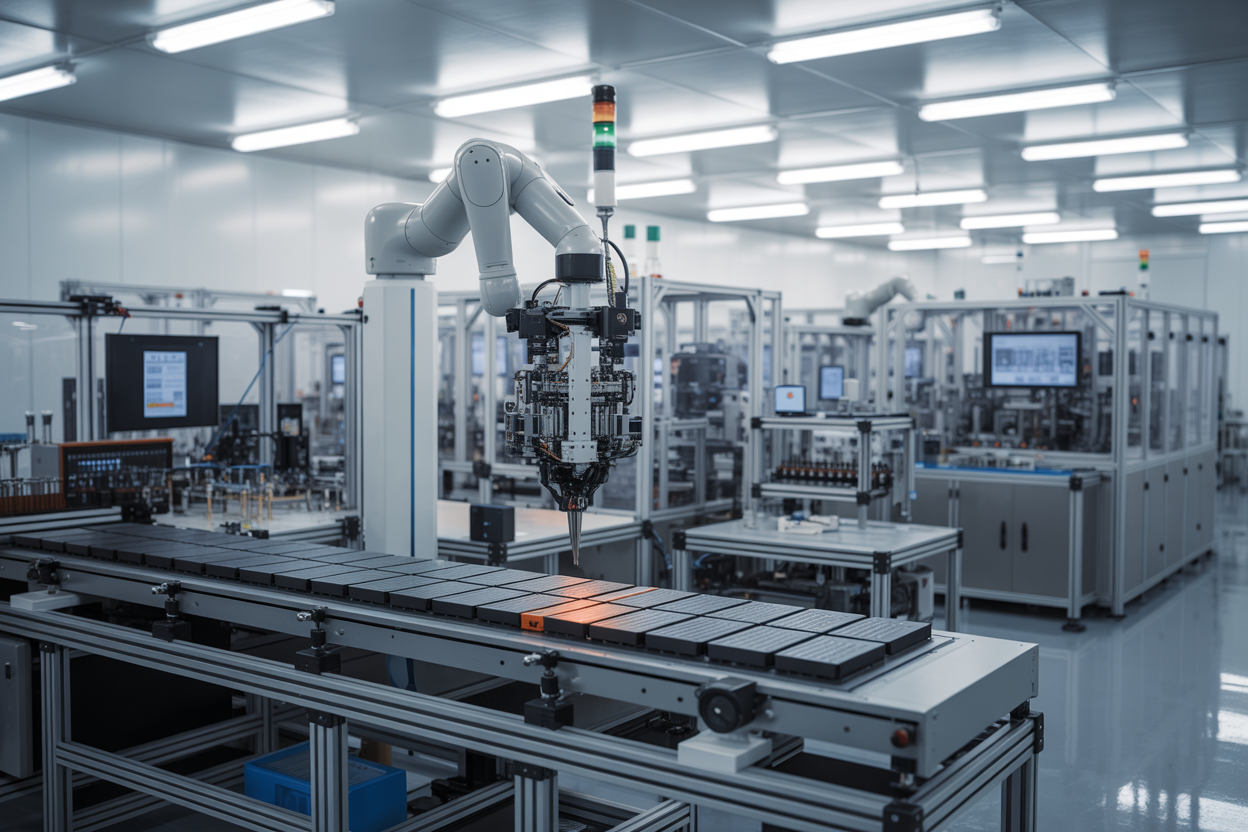
Physical Vapor Deposition Methods
Physical vapor deposition (PVD) represents a critical manufacturing approach for solid state battery technology, enabling precise thin-film deposition of solid electrolyte materials. This technique allows manufacturers to create uniform layers with exceptional control over thickness and composition, addressing the stringent requirements for electrode-electrolyte interfaces in solid state batteries.
Chemical Vapor Deposition and Electrodeposition
Chemical vapor deposition (CVD) and atomic layer deposition (ALD) have emerged as promising fabrication technologies for solid state battery manufacturing. These advanced deposition methods enable the creation of high-quality solid electrolyte films with improved electrode-electrolyte interface contact. The precision offered by these techniques helps address critical challenges such as low ionic conductivity at interfaces and ensures better ion transport at room temperature.
Automated and Continuous-Flow Production Systems
Now that we have covered deposition methods, automated production systems represent the next evolution in solid state battery manufacturing. These systems incorporate robotic handling for moisture-sensitive sulfides requiring environments with less than 1 ppm H₂O and reactive lithium metal processing under argon atmospheres. Fully automated lines can reduce manual intervention by 20%, while maintaining micron-level precision for handling brittle ceramic electrolytes and lithium metal foils.
Thin-Film Battery Manufacturing Technologies
Thin-film manufacturing technologies focus on addressing the complex interfacial requirements between solid components in solid state batteries. These processes must manage chemical compatibility issues, such as preventing resistive layer formation like Li₂CO₃ on lithium metal, while accommodating mechanical stress from electrode expansion and contraction during cycling. The manufacturing complexity requires specialized equipment including sintering furnaces and dry-room robotics, with cycle times extending to hours for proper layer sintering and pressing operations.
Current Industry Development and Market Applications
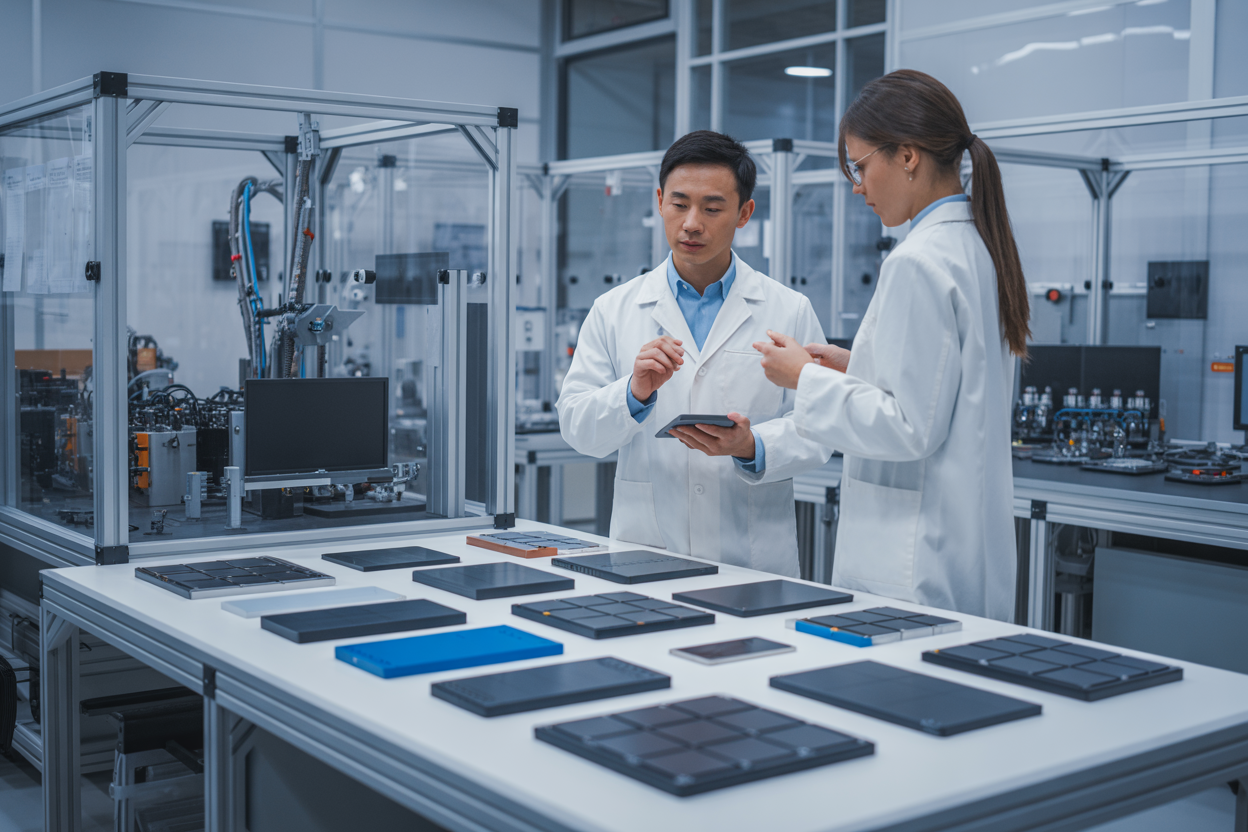
Leading Companies and Research Institutions
The solid state battery market is dominated by key players including QuantumScape Corporation, Solid Power, Toyota, Samsung SDI Co., Ltd., and STMicroelectronics. Companies like Hitachi Zosen Corporation have achieved significant milestones, receiving their first commercial order for 12 AS-LiB units and successfully completing a year-long space demonstration. Strategic partnerships are accelerating development, such as LG Chem’s collaboration with Factorial Inc. to advance solid-state battery materials for electric vehicles, leveraging proprietary FEST technology.
Electric Vehicle Integration Plans
With the automotive industry remaining the biggest demand generator for solid state batteries during the forecast period, electric vehicles are expected to grow at a CAGR of 64.2%. Major automakers are actively exploring solid state battery technology to improve vehicle range and charging times, driven by government initiatives aimed at reducing carbon emissions and the rising need for sustainable transportation solutions.
Consumer Electronics and Wearable Applications
Consumer and portable electronics held the dominant position with 32.9% revenue share in 2024, driven by increasing demand for compact, efficient energy solutions in smartphones, wearables, and IoT devices. Thin film batteries dominate this segment with 89.8% market share, particularly suitable for medical equipment, smart cards, RFID, and wearable gadgets due to their miniature size and compatibility with microelectronic fabrication techniques.
Industrial and Space Technology Uses
Industrial applications account for more than a quarter of the worldwide solid state battery market, fueled by continued acceptance in medical, military, and maritime settings. These batteries power pacemakers, smart lenses, wireless body area networks, and implanted devices. Space technology applications have proven successful, with Hitachi Zosen’s Space AS-LiB completing a year-long demonstration and earning a Certificate of Space Flight from JAXA, showcasing reliability for future aerospace applications.
Technical Challenges and Ongoing Solutions
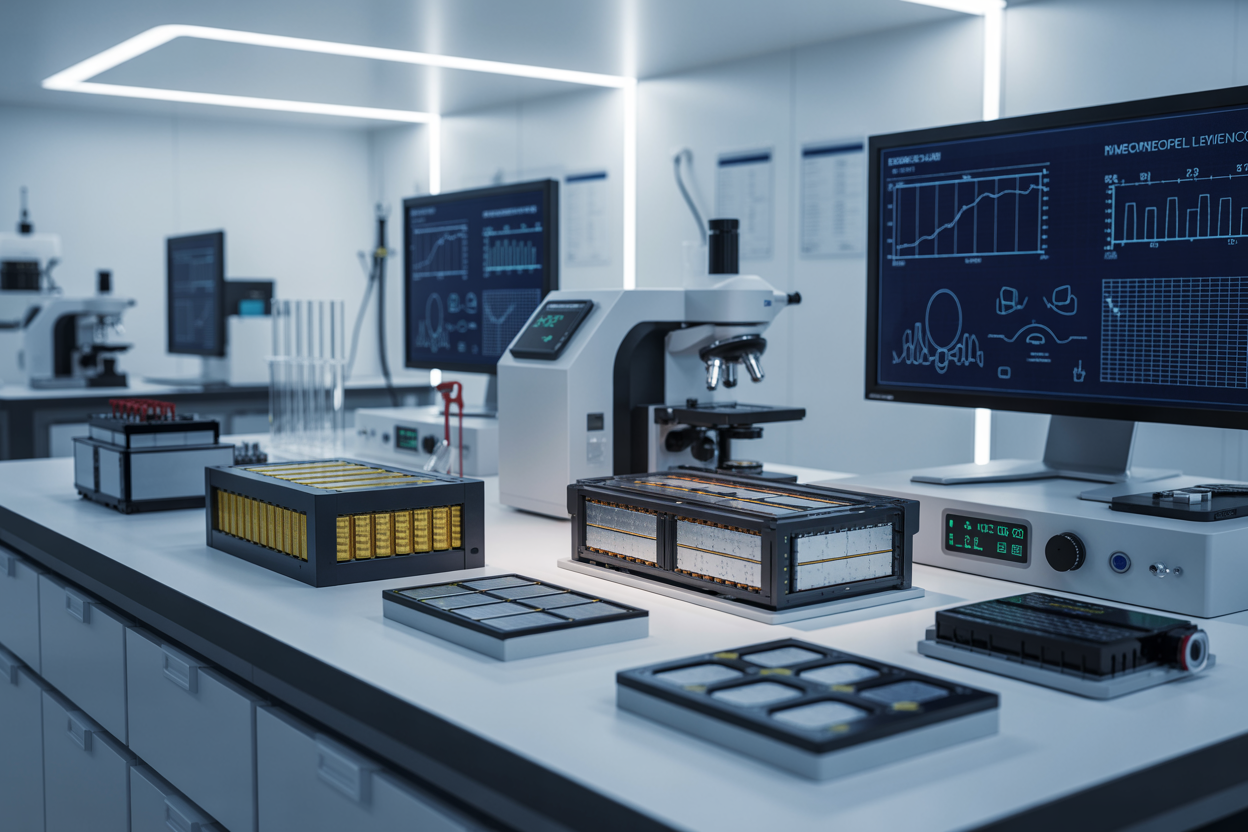
Interfacial Resistance and Dendrite Formation Prevention
Interfacial resistance remains a critical challenge in solid state battery technology, primarily caused by mechanical instability, chemical reactions, and space charge layer formation. Unlike liquid electrolytes that naturally flow and infiltrate electrode surfaces, solid electrolytes cannot achieve intimate contact with electrodes, creating inherently high resistance at interfaces. This mechanical instability combines with electrochemical reactions between electrodes and solid electrolytes, leading to impedance increases that significantly impact battery performance.
The formation of space charge layers at electrode-electrolyte interfaces represents another fundamental challenge unique to solid state batteries. Unlike conventional liquid electrolyte systems where potential gradients can be compensated by multiple charge carriers, solid electrolyte interfaces rely solely on lithium ion diffusion, creating sharp concentration gradients that contribute to interfacial polarization and reduced ionic conductivity.
Mechanical Failure and Volume Change Management
Volume changes during charge and discharge cycles create significant stress and strain within solid state battery architectures. The generated mechanical forces lead to contact loss between electrode active materials and solid electrolytes, as well as crack formation that further increases interfacial resistance. This mechanical degradation is particularly problematic because solid electrolytes cannot accommodate dimensional changes like liquid systems.
The coupling between mechanical instability and electrochemical performance creates a cascade of failure mechanisms. As volume changes occur, the resulting stress can cause delamination at critical interfaces, disrupting lithium ion transport pathways and creating additional resistance that compounds over cycling, ultimately limiting the practical lifespan of solid state battery technology.
Temperature and Pressure Sensitivity Issues
Solid state batteries exhibit pronounced sensitivity to operating temperature and applied pressure conditions. Temperature variations affect the ionic conductivity of solid electrolyte materials and influence the stability of electrode-electrolyte interfaces. Lower temperatures typically reduce lithium ion mobility within solid electrolytes, while elevated temperatures can accelerate unwanted chemical reactions at interfaces.
Pressure sensitivity becomes critical for maintaining adequate contact between rigid solid components. Insufficient mechanical pressure leads to poor interfacial contact and increased resistance, while excessive pressure can cause mechanical damage to delicate solid electrolyte structures. This narrow operating window for optimal pressure conditions presents significant challenges for practical solid state battery applications.
Manufacturing Scalability and Cost Control
Current manufacturing processes for solid state battery technology face substantial scalability challenges that directly impact production costs. The need for precise control over interfacial properties requires specialized fabrication techniques that are difficult to implement at industrial scale. Achieving consistent interfacial contact across large electrode areas while maintaining the structural integrity of solid electrolyte materials presents ongoing manufacturing obstacles.
Cost control remains a significant barrier to commercialization, as current solid state battery manufacturing requires expensive materials and complex processing steps. The coupling of mechanical, chemical, and electrochemical factors necessitates sophisticated quality control measures throughout production, further increasing manufacturing complexity and associated costs compared to conventional lithium ion battery technology.
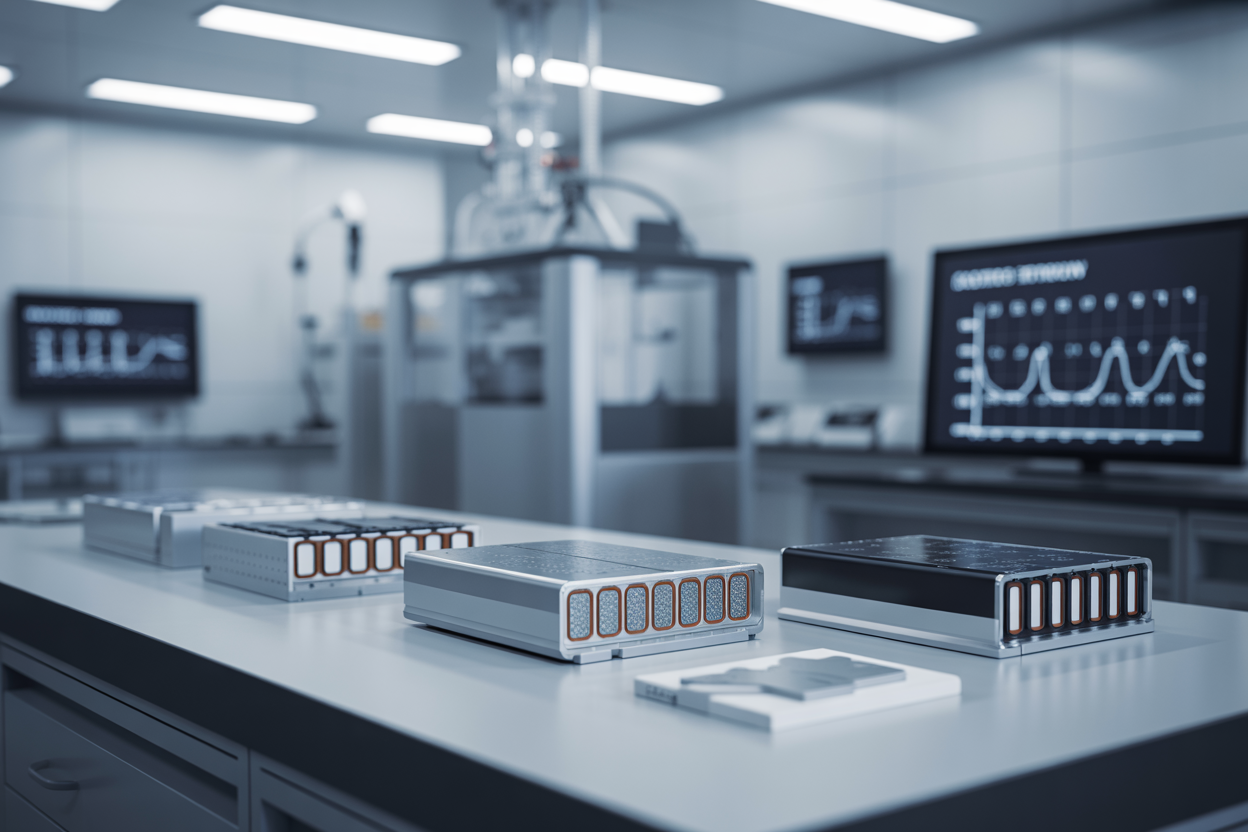
Solid-state battery technology represents a transformative leap forward in energy storage, offering compelling advantages over traditional lithium-ion batteries across multiple critical dimensions. From superior energy densities exceeding 350 Wh/kg to enhanced safety profiles through non-flammable ceramic separators, these batteries address fundamental limitations that have constrained conventional battery performance. The revolutionary anodeless architecture and diverse solid electrolyte materials—including ceramics, sulfides, and chloride-based conductors—enable faster charging times, extended operational lifespans, and broader temperature ranges that traditional batteries simply cannot match.
While technical challenges such as interfacial resistance and manufacturing complexities remain, ongoing innovations from industry leaders like QuantumScape, Toyota, and Solid Power demonstrate the technology’s commercial viability. With planned mass production targeting the mid-2020s and applications spanning electric vehicles to industrial uses, solid-state batteries are poised to unlock new possibilities in energy storage. As research continues to refine manufacturing processes and material innovations, this technology will play a pivotal role in meeting the growing demand for safer, more efficient, and higher-capacity energy solutions across diverse industries.
FAQs About Solid State Battery Technology
1. What Is Solid State Battery Technology?
Solid State Battery Technology refers to energy storage systems that use a solid electrolyte instead of the liquid or gel electrolytes found in conventional lithium-ion batteries. This design improves safety, increases energy density, and enables faster charging.
2. How Does Solid State Battery Technology Work?
In Solid State Battery Technology, lithium ions move through a solid electrolyte (ceramic, glass, or polymer) instead of a liquid. This eliminates the risk of leaks, allows tighter packaging, and improves overall battery performance and longevity.
3. What Are the Advantages of Solid State Battery Technology?
The main benefits of Solid State Battery Technology include higher energy density, improved thermal stability, faster charging times, longer lifespan, and reduced risk of fire or explosion compared to traditional lithium-ion batteries.
4. What Are the Challenges Facing Solid State Battery Technology?
While promising, Solid State Battery Technology faces challenges such as high manufacturing costs, scalability issues, and the need for improved solid electrolyte materials to achieve mass adoption in electric vehicles and consumer electronics.
5. How Is Solid State Battery Technology Used in Electric Vehicles?
Solid State Battery Technology is being explored by automakers to increase driving range, reduce charging times, and enhance safety in electric vehicles (EVs). Companies like Toyota, BMW, and QuantumScape are leading research and development efforts.
6. When Will Solid State Battery Technology Be Commercially Available?
Experts predict that Solid State Battery Technology may become commercially viable by 2027-2030 for electric vehicles and other large-scale applications, though smaller consumer electronics may adopt it sooner as production costs decrease.
7. Is Solid State Battery Technology More Sustainable?
Yes, Solid State Battery Technology is considered more environmentally friendly because it can potentially use fewer toxic materials, last longer, and reduce battery waste, contributing to a more sustainable energy future.





